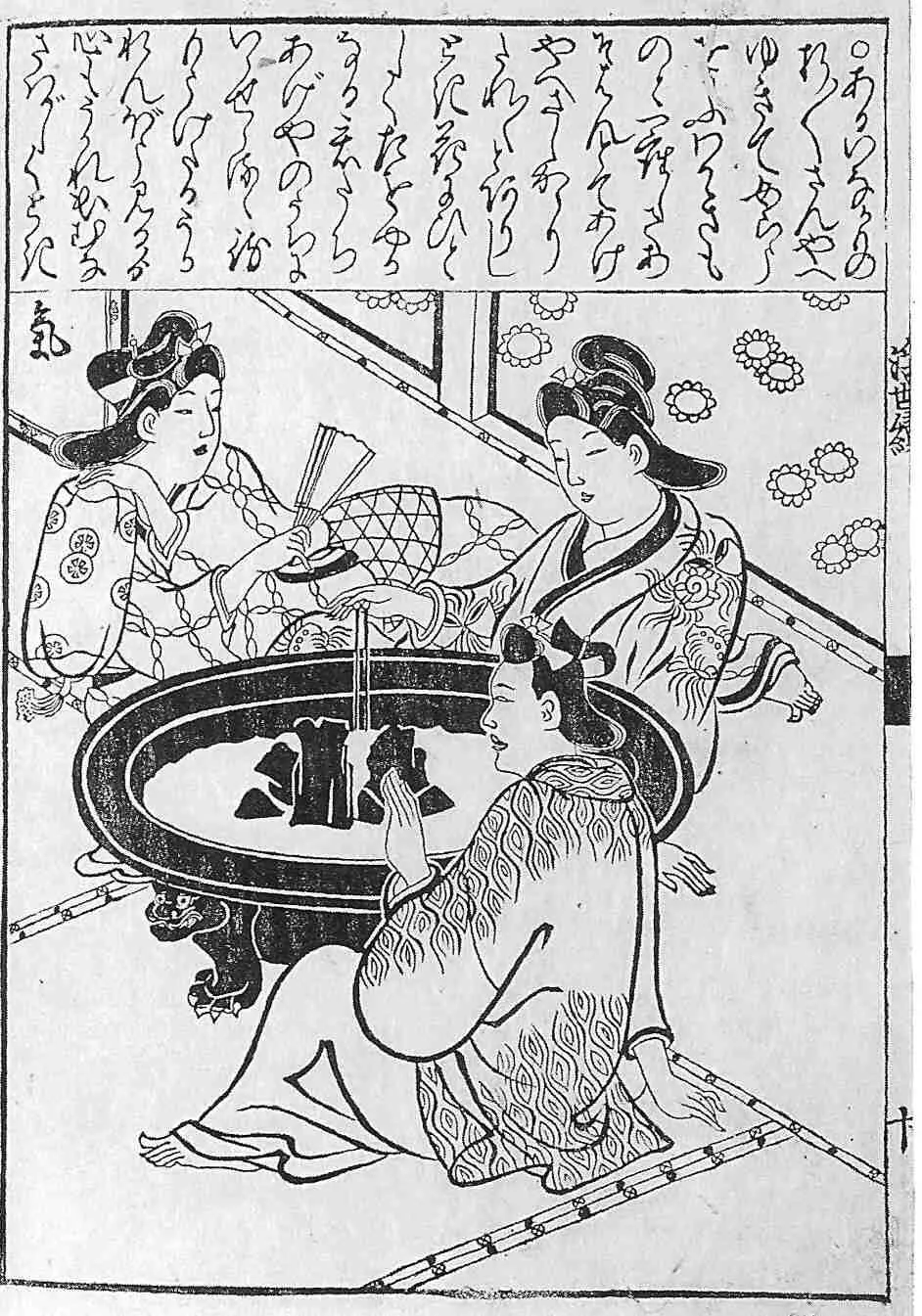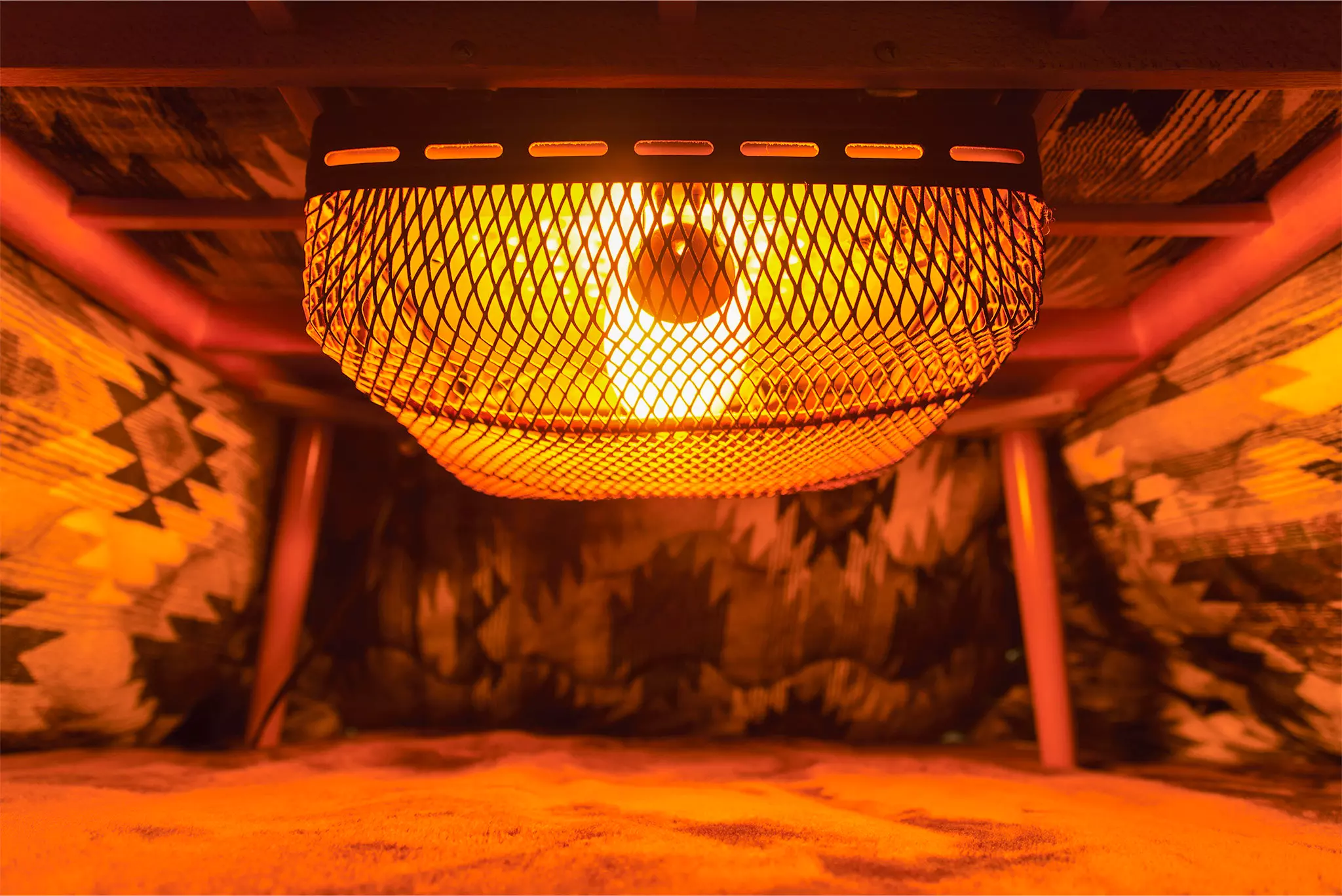Winter is a season of cold days and long nights, which often leads to spending more time indoors, trying to stay warm and cozy. In Japan, there is a unique solution to combat the bitter chill of winter - the kotatsu. You may have come across this fascinating invention in the popular game Animal Crossing and wondered what it is all about. Well, we're here to shed some light on this genius creation.

What is a Kotatsu Table?
Let's start with the basics. A kotatsu is essentially a type of home heater. It consists of a low table with a heater underneath, covered by a blanket. The purpose of the kotatsu is to warm up your legs as you sit around it. While central heating and air conditioning have become more common in Japan, the kotatsu still holds a special place in the hearts of the Japanese people. It provides a unique kind of warmth that doesn't dry out the room like air conditioning does. It also offers a perfect excuse for snuggling up close with friends and family in a culture that values personal space.
There are two types of kotatsu: the "oki-gotatsu" and the "hori-gotatsu". The former is a portable, home-style heater, while the latter is more robust and often found in traditional Japanese restaurants.
To enjoy the kotatsu experience, you simply lift up the blanket (kotatsu-buton) and put your legs under it, next to the heater. Then, the blanket goes back on top, creating a cozy cocoon. While sitting in the kotatsu, you can eat, drink, play card games, watch TV, or simply relax with a warm cup of hot chocolate or matcha. Some kotatsu models even allow for multiple people to gather around without a blanket, promoting a sense of togetherness and shared warmth.

History of the Kotatsu
The kotatsu has a fascinating history that dates back around 700 years to the Japanese Muromachi period (1336-1573). Its origins can be traced to the Japanese innovation of the "irori," a sunken fire pit in the middle of the dining room where families would gather during winter. Over time, they started draping clothes above the irori, which eventually evolved into special blankets. People would stick their feet underneath the blankets to enjoy the warmth.
During the Edo period, the kotatsu saw significant advancements. The sides of the irori were dug out, forming what can be considered the original "hori-gotatsu" (hori meaning "dig"). Paintings and uki-e from the Edo period depict aristocracy snuggled under their own kotatsu, complete with blankets.
In the late Edo period, as tatami mats became more common in Japanese homes, the irori fire was replaced by a "hibachi," a ceramic charcoal pot. This innovation gave the kotatsu mobility, allowing it to be easily transported and moved around the house. This was a game-changer for cold Japanese homes.
Fast forward to the 1950s Showa period (1926-1989), and the traditional charcoal hibachi was replaced by electric kotatsu. This switch was primarily driven by safety concerns, as having a charcoal heater underneath the table posed some risks. Electric kotatsu also offer the advantage of temperature control, making them more convenient and efficient.
Today, you can find various advancements in kotatsu technology, including "wearable kotatsu" and even kotatsu overalls, proving that this ingenious invention continues to evolve.

Types of Kotatsu
In modern-day Japan, you'll come across different types of kotatsu, each with its own unique features.
Oki-gotatsu
The oki-gotatsu is a heated, blanketed table. It has an electronic heating element affixed to the underside of the table, with a blanket that goes over and around it, reaching down to the floor. On top of the blanket, you'll find the table surface.
Hori-gotatsu
The hori-gotatsu is typically found in traditional Japanese restaurants like izakayas and sushi places. Unlike the portable oki-gotatsu, the hori-gotatsu is sunken and often does not have a leg cover. The table is on the same level as the floor, with a space underneath for people to put their legs. You can climb into the hori-gotatsu, and it is believed to provide better posture support.
During the winter, restaurants and eateries with hori-gotatsu are unsurprisingly popular, offering a cozy and comfortable dining experience.
Benefits of Kotatsu
Kotatsu tables offer several advantages that make them a popular choice for staying warm during the winter season.
Energy Efficient
Compared to heating an entire room, the kotatsu focuses its heat in a specific area, drawing people closer for warmth. Unlike air conditioning, which adjusts its energy output according to temperature fluctuations, the kotatsu does not waste energy by blasting heat into the whole room.
Price
In addition to being energy efficient, kotatsu tables are also more affordable than air conditioning units. They provide an economical option for staying warm during the cold winter months.
Comfort
Don't we all love an excuse to gather around a table with our friends and loved ones? The kotatsu provides the perfect opportunity to invite people over and share a meal or drinks together. It creates a cozy and inviting atmosphere, perfect for spending quality time with the ones you care about.

Are Kotatsu Dangerous?
The simple answer is no, as long as you use them responsibly. Falling asleep under a kotatsu can be dangerous, as one of the editors at Tokyo Weekender discovered. Minor burns can occur if you accidentally touch the heater while asleep. It's important to supervise children, pets, and babies when using the kotatsu, as they may not be aware of their own body heat and could fall asleep under it.
Apart from that, the kotatsu is perfectly safe to use. Its direct heat is not enough to burn you if you touch it directly.
Where and When to Find Kotatsu Tables
If you're in Japan, you'll find kotatsu tables widely available, both in restaurants (often as hori-gotatsu) and in family homes (oki-gotatsu). As soon as there's a nip in the air, families and restaurants across Japan start using their kotatsu tables to keep warm. Some Japanese inns even have rooms equipped with kotatsu tables for a traditional and comfortable stay. If you want to have your own kotatsu, you can find them at stores like Don Quijote, electric shops, or online.
For those outside of Japan, larger electric stores and specialist websites may be your best bet for finding a kotatsu table.
Conclusion
The kotatsu is a genius invention that provides warmth and comfort during cold winters in Japan. Whether you're enjoying a relaxing evening at home or dining out in a traditional restaurant, the kotatsu offers a unique experience that brings people together. With its energy efficiency, affordability, and cozy atmosphere, the kotatsu is truly a remarkable way to survive the winter chill.
Related Posts
- What is Konbu? Everything You Need To Know About The Japanese Seaweed
- What is Wasabi and Why Is It so Spicy?
- Why are Japanese Houses so Cold?









